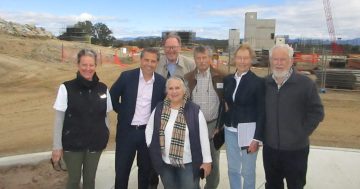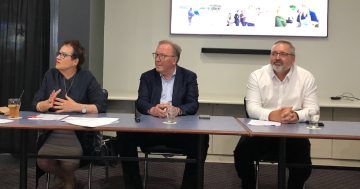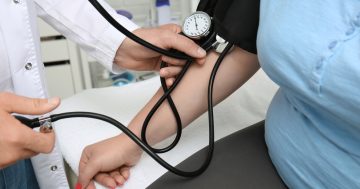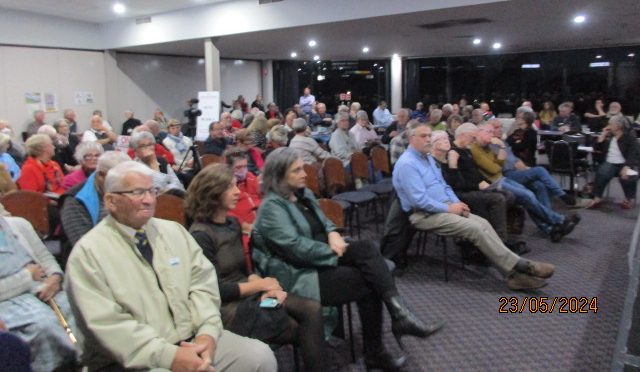
A Q and A community forum on the new Eurobodalla Regional Hospital in Moruya on Thursday 23 May was well attended. Photo: Supplied.
A community forum in Moruya has improved understanding of what the new Level 4 Eurobodalla Regional Hospital means for the Far South Coast.
The panellists at the Q and A session explained what a Level 4 hospital could and could not deliver. It will not end the need for Far South Coast residents to travel to receive some of the healthcare they need but the community will receive a better range of healthcare services than currently provided by Batemans Bay’s Level 2 hospital and Moruya’s Level 3 hospital.
Emergency physician Dr Stuart Stapleton said the new hospital would be able to look after ventilated patients within the hospital for “a period of time”.
“That critical care service becomes a hub for the rest of the hospital,” he said. “If we get that Level 4 critical care service right, with all the associated services behind it like general ward work, operating theatres and maternity, and support services like pathology, medical imaging and allied health, then we start to ramp up the level of service that we can provide to the community,” Dr Stapleton said. For example, there is an expectation that Level 4 hospitals develop a stroke unit.
Southern NSW Local Health District general manager Brad Scotcher could not answer retired GP Dr Arn Sprogis’ question about the release of the updated Clinical Services Plan and took it on notice, while Moruya GP Dr Martin Carlson was told the new hospital would have a geriatrician but not a secure unit for dementia patients.
Member for Bega Dr Michael Holland said the shire was only 56 per cent self-sufficient with the two existing hospitals so 44 per cent of patients must travel to other hospitals for care. With the Level 4 hospital, “we can keep the population closer to home for their medical and surgery treatment”, Dr Holland said.
Dr Stapleton said modern emergency care involved rapid diagnostics to determine the definitive care for the patient.
“We have to move them to where the best care is. That is what we are trying to do by delivering a Level 4 hospital,” he said. That will be supported by having a helipad if patients need to be transferred elsewhere.
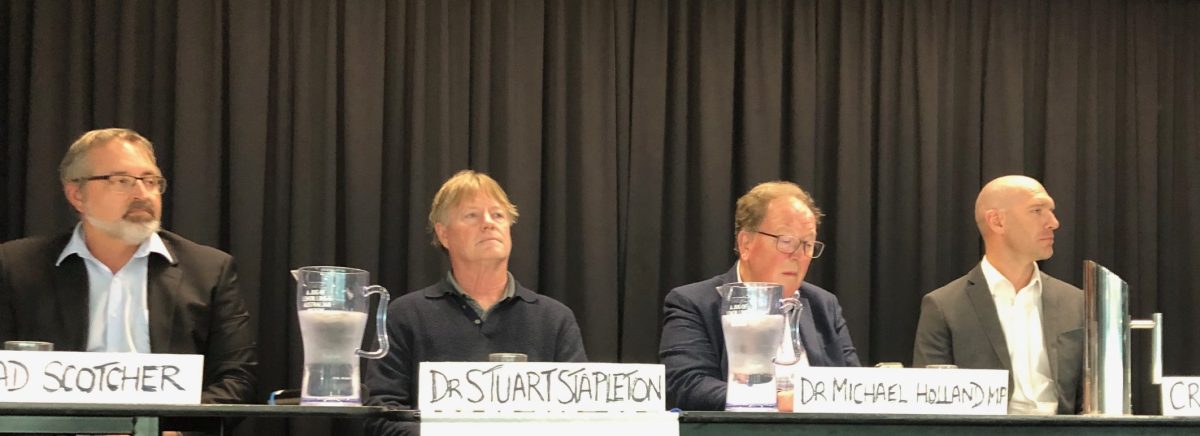
The four panellists at the Moruya Q and A community forum were Southern NSW Local Health District general manager Brad Scotcher, emergency physician Dr Stuart Stapleton, Member for Bega Dr Michael Holland and Eurobodalla Shire Mayor Mat Hatcher. Photo: Marion Williams.
Staffing of the new hospital was another focus of the forum at Moruya Golf Club on Thursday 23 May. Mr Scotcher said the hospital would need an additional 165 full-time-equivalent staff. That included 55 medical, 68 nursing and 16 allied health professionals.
“I would not expect to have all those staff on day one,” he said, but nor did he expect a dramatic increase in demand on day one. Like the range and level of clinical services provided, staff numbers will be ramped up over time to meet the Level 4 standard.
Dr Carlson asked if the shire would remain dependent on locums with varying degrees of experience. Dr Stapleton said they were developing a regular group of locums who understood the community and enjoyed working in the Eurobodalla.
Dr Stapleton said there was a major issue recruiting specialist staff to regional areas, but they could be very well supported by very high-level regional generalists. He said they were looking at different models for training and retention including linking with teaching hospitals.
“It is a long-term project but it is beginning,” he said. “Having a Level 4 hospital will make a big difference.”
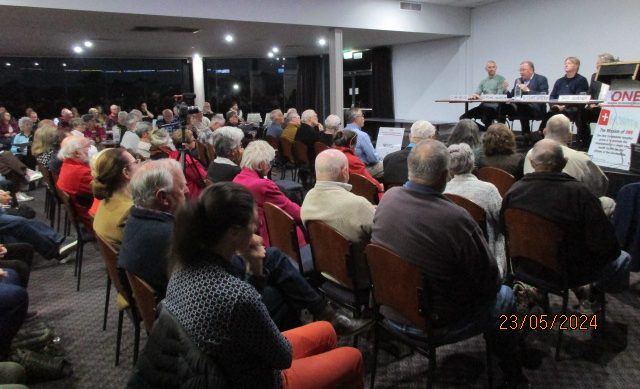
Several of the questions at the Q&A community forum at Moruya Golf Club on 23 May came from healthcare professionals. Photo: Supplied.
The provision of a local radiotherapy service (LRS) was raised, citing the Bega Valley and Eurobodalla shires’ combined population of 80,000 and ageing demographic.
Frances from Eurobodalla Can Assist said travelling for radiotherapy treatment caused the most emotional and financial stress.
Dr Holland wholeheartedly agreed the demographics warranted an LRS but said when they promised a Level 4 hospital, they never promised it would open with an LRS. He said it was physically and fiscally impossible for the hospital to open in 2026/27 with an LRS. He said it must be proved that the LRS would be sustained by the population and he questioned if a facility that could accommodate two linear accelerators might be needed as cancer rates increased.
Dr Holland said Professor Mick Reid’s independent viability report about an LRS for the region had gone from the NSW Ministry of Health to the Federal Ministry of Health and the Aged.
On 27 May the NSW Government announced the hospital had received final approval, with construction expected to start in June.
Dr Holland said if the project exceeded its $260 million budget, “it is my job to make sure that any shortfall is accommodated in [next month’s] state budget and that will be provided with no risk of the scope of the building that we are developing according to the clinical services plan”.










